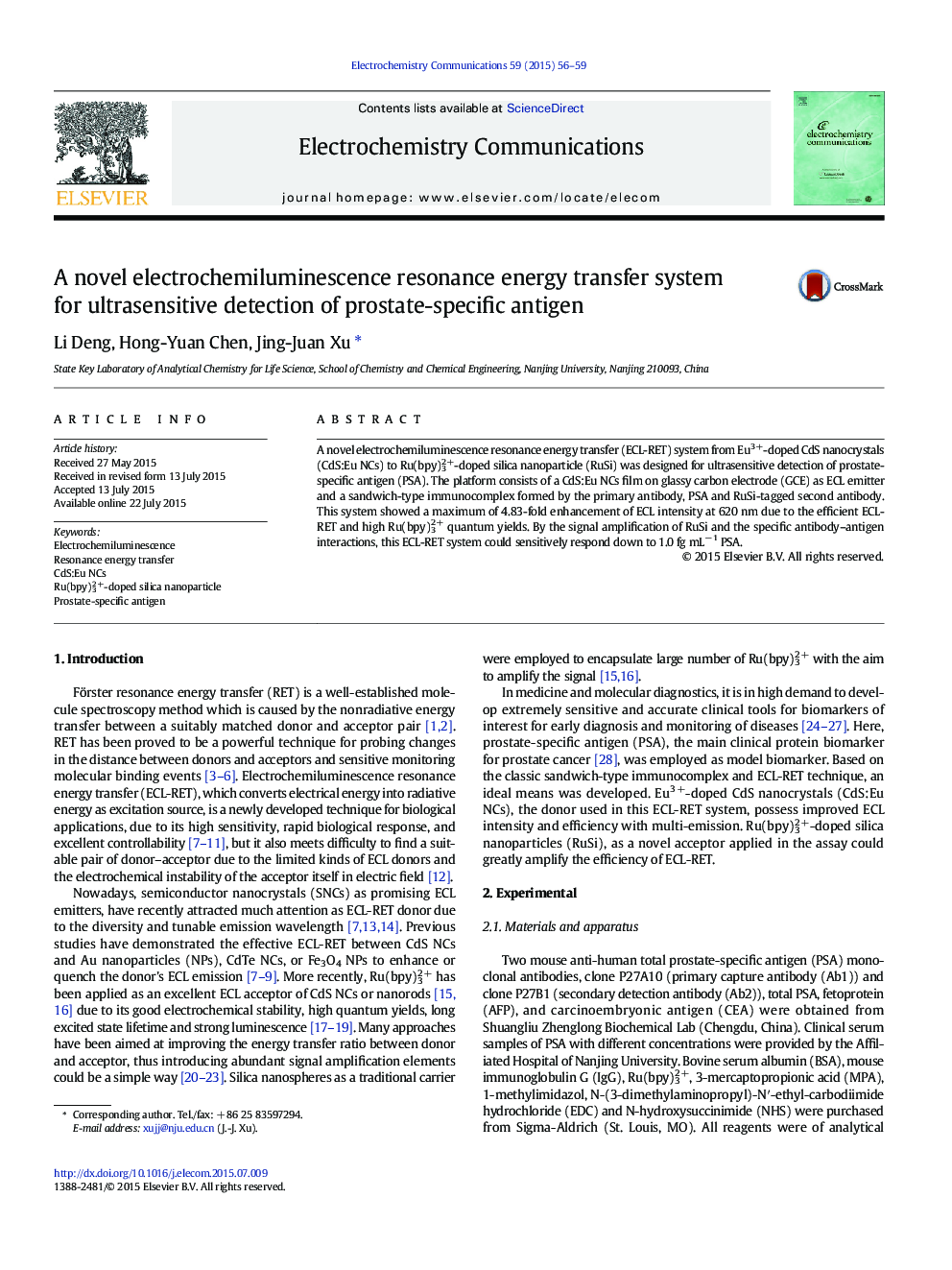| Article ID | Journal | Published Year | Pages | File Type |
|---|---|---|---|---|
| 178864 | Electrochemistry Communications | 2015 | 4 Pages |
•A novel electrochemiluminescence resonance energy transfer (ECL-RET) immunosensor was designed.•Prostate specfic-antigen (PSA) was employed as model biomaker.•Eu3 +-doped CdS nanocrystals (CdS:Eu NCs) immobilized on glassy carbon electrode acted as ECL donor.•Silica nanospheres encapsulating Ru(bpy)32 + (RuSi) acted as ECL-RET acceptor and label to tag secondary antibody of PSA.•The ECL-RET from CdS:Eu NCs to RuSi showed a maximum 4.83-fold enhancement of ECL intensity at 620 nm.•This principle offered great potential for application in many other bioassays.
A novel electrochemiluminescence resonance energy transfer (ECL-RET) system from Eu3 +-doped CdS nanocrystals (CdS:Eu NCs) to Ru(bpy)32 +-doped silica nanoparticle (RuSi) was designed for ultrasensitive detection of prostate-specific antigen (PSA). The platform consists of a CdS:Eu NCs film on glassy carbon electrode (GCE) as ECL emitter and a sandwich-type immunocomplex formed by the primary antibody, PSA and RuSi-tagged second antibody. This system showed a maximum of 4.83-fold enhancement of ECL intensity at 620 nm due to the efficient ECL-RET and high Ru(bpy)32 + quantum yields. By the signal amplification of RuSi and the specific antibody–antigen interactions, this ECL-RET system could sensitively respond down to 1.0 fg mL− 1 PSA.
